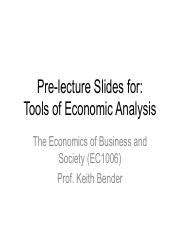Economists use data to understand how the economy works and to make predictions about the future. They collect data from a variety of sources, including government agencies, businesses, and individuals. This data can be used to analyze economic trends, identify economic problems, and develop economic policies.

However, they can also be used to test economic theories. For example, an economist might use data to test the theory that the demand for a product increases when the price of the product decreases. By comparing the sales of a product at different prices, the economist can see if there is a relationship between the price of the product and the demand for the product.
Two Ways Economists Use Data
There are many different ways that economists use data. Here are two of the most common uses:
- Descriptive statistics. Descriptive statistics are used to summarize data. They can be used to calculate measures such as the mean, median, and mode. Descriptive statistics can also be used to create graphs and charts that show the distribution of data.
- Inferential statistics. Inferential statistics are used to make inferences about a population based on a sample. They can be used to estimate the population mean, median, and mode. Inferential statistics can also be used to test hypotheses about the population.
Conclusion
Economists use data to understand how the economy works and to make predictions about the future. They collect data from a variety of sources, including government agencies, businesses, and individuals. This data can be used to analyze economic trends, identify economic problems, and develop economic policies.
